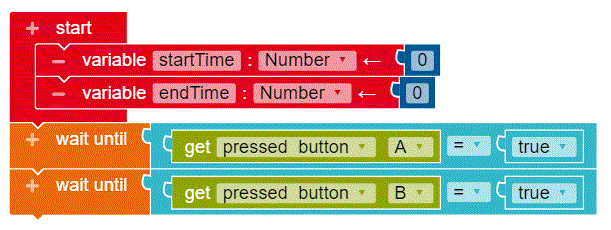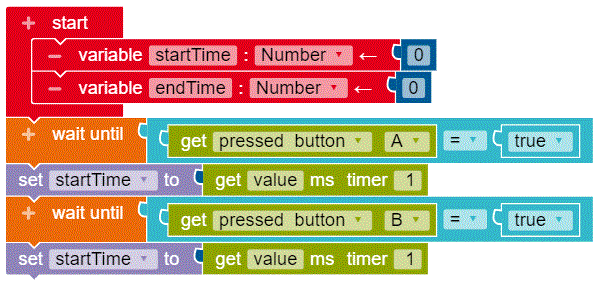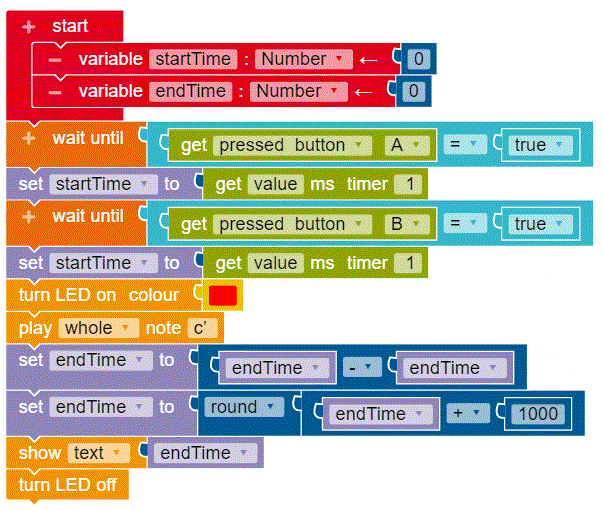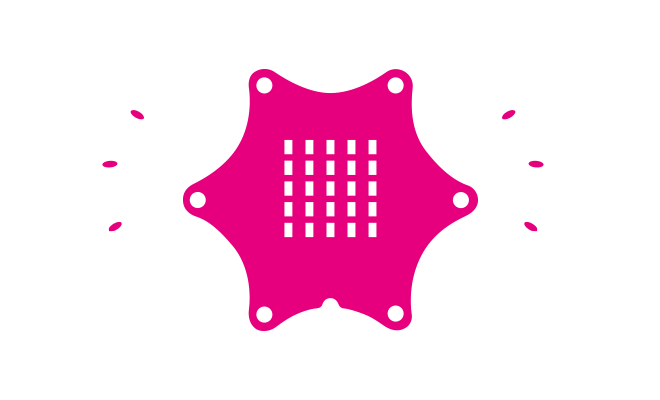The stopwatch
Teaching goals
- Determining how to influence how long you can hold our breath
- Display text on the Calliope
- Programming the start and stop signals
- Displaying a time difference
Required material
- Computer with Internet access
- Calliope mini
- Tasks I and II for the diver
1. a stopwatch requires a start time and an end time. These values are called variables.
Click on the + at Start. With each click you create a variable. With one click on the lighter field you can change the name of your variable.

2. You now use the category Control to add the program with the block Wait... until.
What do I need the two command lines for?
Write down your guess.

3. Use the blocks from the category variables and sensors pictured here to complete your program.

4. Now it's getting a little complicated. You need to switch to expert mode. You do so by clicking on the symbol in the upper left corner (a star with a 2). Now add some blocks from the Math section:
To make it more legible, we cut off the upper part of the program. The lower part of your program should look like this:

5. Try the program in the simulation.
6. Change the program so that the stopwatch shows a green LED at the beginning and try the simulation another time. Save the program under "stopwatch" and then download it onto the Calliope. Try out the stopwatch in different
situations.
7. Go back to the program. What happens if you enter start time instead of end time?
8. What happens if you enter untrue instead of true?
9. Change the program so that to start and stop it, you have to press the button A.
1. Take one deep breath and see how long you breathe the air. Write down the time.
2. Now take five deep breaths and stop the time to see how long you can hold your breath. Write down the time.
3. Take 10 squats, then take 5 deep breaths and measure how long you can hold your breath. Write down the time. How do you explain the result?
4. A whale can stay under water for 1 hour. Only then does he have to go to the surface to get some air. Whalers have been particularly successful catching whales directly after they appeared on the surface. They got very close to them with their boats. If whales have been up for a longer time, they were more likely to escape the whalers. Can you explain that?
5. Find a partner. During the experiment he / she should grimace or tell jokes. How long can you hold your breath?
This text is published under a CC BY-NC 4.0 license. It was originally published in German by Rolf Maroske and translated into English by the Calliope team.


